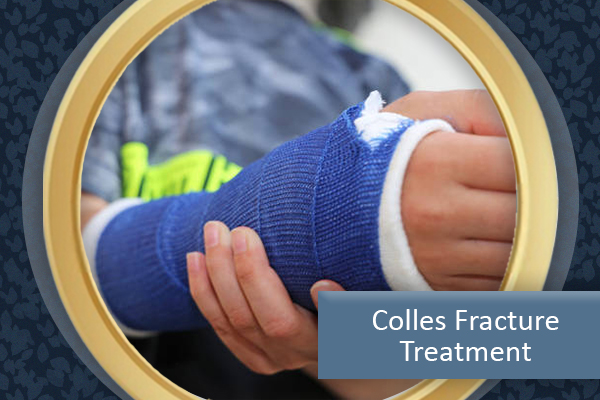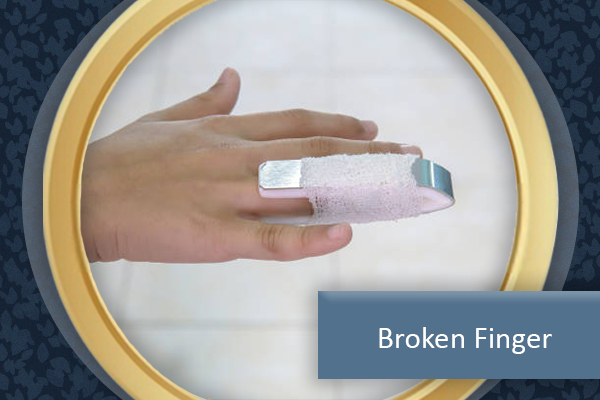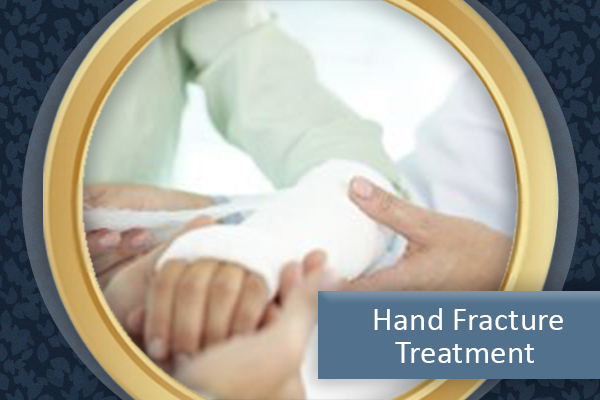Symptoms Of a Distal Radius Fracture
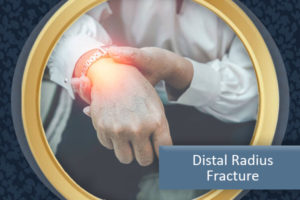 A full fracture or break of the distal radius will be instantly recognizable.
A full fracture or break of the distal radius will be instantly recognizable.
Whether your wrist was smashed between or you stuck your arm down to break your fall, you’ll feel and hear a popping sound.
Following this pop, you will start to feel a burning pain and see redness and swelling around the wrist and forearm. This pain will persist and the site of the fracture will bruise and become very tender. Distal radius fractures will also result in a bent/limp wrist.
If you feel a burning pain and cannot comfortably move your wrist after a fall or hit, go to your local Palmetto sports medicine specialist or orthopedic surgeon to have your broken wrist treated immediately.
Distal Radius Fracture Treatment
The goal of wrist fracture treatments is to stabilize the wrist and promote natural healing, while avoiding complications. If broken bones go untreated or improperly treated, it can lead to Malunion (improper healing of broken bones) or Nonunion (incomplete healing). This is why it is so crucial to receive treatment for broken wrists right away and that process starts with diagnosing the type of fracture that you have sustained.
Diagnosing Different Distal Radius Fractures
- Intra-articular – The break extends into the wrist joint.
- Extra-articular – The fracture does not extend into the wrist joint.
- Stable fracture – When the bone breaks and stays within the proper alignment.
- Unstable fracture – The fracture is more complex and the bones fall out of alignment.
- Comminuted – The fractured bone splits into more than two pieces.
- Open (compound) fracture – The fracture forced the broken bone through the skin.
Depending on the type of fracture you have, your doctor will utilize a combination of splints, casts, pins, screws and plates to realign, immobilize and stabilize the broken wrist. These devices will help protect the fractured wrist and keep patients from overusing the hand and experiencing setbacks to recovery.
Recovering From a Distal Radius Fracture
Recovery periods for a distal radius can vary but will typically breakdown like this:
- 4-6 weeks – The bone will typically be healed.
- 3-4 months – You can start to resume normal activities with the injured wrist at your discretion.
- 6-12 months – Regain motion, strength and function in the broken wrist.
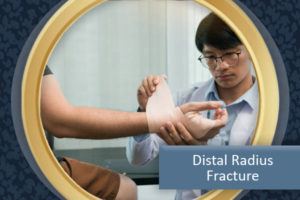 The recovery process for a broken distal radius starts right away. With any injury, especially one that produces swelling, the R.I.C.E. method should be implemented immediately. Rest, Ice, Compression and Elevation will help minimize swelling and other complications before you receive treatment from a medical professional.
The recovery process for a broken distal radius starts right away. With any injury, especially one that produces swelling, the R.I.C.E. method should be implemented immediately. Rest, Ice, Compression and Elevation will help minimize swelling and other complications before you receive treatment from a medical professional.
Be patient as you recover from your fractured distal radius and listen to your doctor and your body. The last thing you want to do is overwork yourself and re-injure your wrist or have it heal improperly.
Ideally you can take the right steps to avoid major sports injuries that keep you out of the game. However, if you are sidelined with a distal radius fracture or any other sports injury, give the experts at All-Pro Orthopedics and Sports Medicine a call @ (954) 322-1110 today!
Common Questions about Distal Radius Fracture
How do I know if I have a distal radius fracture?
A complete fracture or break of the distal radius will be instantly recognizable. There will be a popping sound whether your wrist was smashed or you stuck your arm down to break your fall.
After the pop, the area around your wrist and forearm will become red and swollen, and you’ll feel a burning pain. This pain will persist, and the fracture site will bruise and tender. A distal radius fracture will also result in a bent or limp wrist.
Immediately seek medical attention if you experience any of these symptoms after an injury to your forearm or wrist:
- Immediate severe, burning pain in the affected wrist
- Swelling and deformity of the wrist
- Cannot comfortably move your wrist
How is distal radius fracture diagnosed?
A distal radial fracture is very easy to identify in the presence of deformity. Clinical examination will include assessment of the:
- A sensation of the hand
- Circulation of the hand
- Tendon injuries
- Elbow or shoulder fracture (20% of patients with wrist fractures can have missed elbow or shoulder injuries)
What are the different types of distal radius fractures?
An impact to the wrist caused by a fall or traffic accident can cause most of the body weight to transfer to the wrist. There are various types of fractures to the distal radius. Specialists from our different Florida locations can provide a complete diagnosis.
- Intra-articular – The break extends into the wrist joint.
- Extra-articular – The fracture does not extend into the wrist joint.
- Stable fracture – When the bone breaks and stays within the proper alignment.
- Unstable fracture – The fracture is more complex, and the bones fall out of alignment.
- Comminuted – The fractured bone splits into more than two pieces.
- Open (compound) fracture – The fracture forced the broken bone through the skin.
What should I do to my distal radius fracture?
In any injury, the faster you act, the faster the healing process will begin, and the more likely you will achieve a full recovery.
It’s also essential to seek professional help. As with any fracture, putting off a professional diagnosis only increases your risk of poor healing.
If you have an injury-causing swelling, you should immediately implement the R.I.C.E. method. Rest, Ice, Compression, and Elevation will help minimize swelling before you seek medical attention.
Head to the nearest All-Pro Orthopedics and Sports Medicine in any of our Florida locations for a complete diagnosis and treatment. Our specialists can take care of distal radius fractures.
How will an orthopedic specialist treat my distal radius fracture?
Fortunately, our orthopedical specialists in our Florida locations can treat your distal radius fracture.
Our orthopedic specialists will use a combination of splints, casts, pins, screws, and plates to stabilize, realign and immobilize your broken wrist, depending on your type of fracture. In addition to protecting the fractured wrist, these devices will prevent patients from overusing the hand and experiencing setbacks in recovery.
How long is recovery from a distal radius fracture?
Most distal radius fractures will heal within 4 to 6 weeks. The recovery process for a broken distal radius starts right away.
By 3 to 4 months, you can start returning to your normal activities with the injured wrist. By 6 to 12 months, you will be able to regain motion, strength, and function in the broken wrist.
Listen to your doctor and your body while recovering from a fractured distal radius. Don’t overwork yourself and risk re-injuring your wrist or failing to heal properly.




